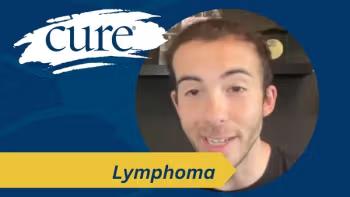
Prescribed Topical Treatments May Minimize Scarring for Patients with Skin Cancer
Topical treatments may lead to little to no scarring in patients with surface-level skin cancer, but patient characteristics, time of year, tumor characteristics and cost determine course of action.
Topical treatments for cutaneous malignancies such as basal cell carcinoma, squamous cell carcinoma and melanoma give patients a treatment option without scarring.
Dr. Eva Parker, assistant professor of dermatology at Vanderbilt University Medical Center in Nashville, Tennessee, discussed this in further detail at the CURE® Educated Patient® Skin Cancer Summit. She highlighted how topical treatments for this patient subset could be ideal for those looking for a less intrusive and minimal scarring option.
CURE® spoke with Parker to discuss the benefits of topical treatments, cases in which the treatment wouldn’t work and why black salve is not an alternative option.
CURE®:When is it appropriate to prescribe topical treatments?
Parker: The considerations are based on patient characteristics, cost, time of year and importantly tumor characteristics. You have to have the right type of tumor to use a topical treatment. It has to be either a precancer like an actinic keratosis (rough, scaly patch of skin that develops from years of sun exposure) or it needs to be a superficial basal cell carcinoma (a type of basal cell carcinoma that grows slowly and isn’t as invasive) ideally. You can potentially use these therapies for squamous cell carcinoma in situ, but generally they are all off-label, meaning not (Food and Drug Administration) approved to use for those tumors. Superficial basal cell carcinoma and squamous cell carcinoma are confined to the outer layer of skin. The rationale is that when you apply a topical treatment to the skin, it's only going to penetrate the superficial layers, and so those are the only layers that are going to be targeted by that treatment, so deeper tumors really aren't appropriate.
Are there any other cases where you would not prescribe a topical treatment?
Once you determine you have the right type of lesion or lesions to treat, then you have to consider the patient. These topical treatments are applied at home, often once or twice a day and often for many weeks. You have to have a patient who's going to be compliant and reliable with that therapy and apply at home. I always tease my patients and say, “You know, I'm not going to show up at your house and put this on for you.” So that's an important piece. ,
The location of the tumor on the body and the patient's mobility (is also important). If this is an elderly patient who lives alone, and (the tumor is) in the center of their back, they're not going to be able to reach the site to even apply the medication. That is definitely an important consideration. These treatments are laborious.
They take a commitment of time from the patient. … (For) diffuse actinic keratosis, so many times I see patients (with) precancers all over their face, and it’s not practical to think that we’re going to use liquid nitrogen to freeze them. Those patients are better treated if we use a topical field treatment. So we're not just applying to a small area; we're treating the entire area of damage like their entire face. Often, that's for two or three weeks, and they have a very big, red crusted reaction during that time. You have to consider what their professional and social obligations are. We have people in business and in the entertainment industry, and they simply don't have the luxury of taking three weeks off to do this treatment.
Time of year is important because of the fact that the sun will intensify the reaction for almost all of the topical therapies. These are always best done in the fall, winter or early spring. If you diagnose a tumor at the end of May and it's a skin cancer, you probably don't want to punt that all the way to the fall or the winter because that's really a long time, and skin cancer should be treated in a more timely manner. In those situations, we may make the decision to go ahead and treat it sooner procedurally to benefit the patient and reduce morbidity.
Another consideration is just the health literacy of the patient and the cost of the medication. There's often a fair amount of instructions that come with using topical therapy. If we have patients who struggle to understand those instructions and therefore might not be compliant with the treatment, or if they miss apply the medication (and) could have a complication, then that may be another decision where I would say let's treat this procedurally.
The cost of the medication can be significant. So depending on the type of prescription coverage and health coverage the patient has, that is another consideration.
What are the benefits of topical treatments?
The biggest incentive is that generally outside of … the scar from the biopsy might leave, then there's really little risk of scarring beyond that with these treatments. For someone who, say, is a woman who has a superficial basal cell on her face, this might be a really reasonable option. While she may have to go through weeks of having a localized crusted reaction, in the end, there won't likely be much scarring versus if it were excised, she would have a large linear scar permanently on the skin. So for people who have a lot of concern about scarring, this is worth the effort.
What can happen if topical treatments aren’t applied correctly?
For instance, if you're treating the face and it's applied near the eye, (the patient) could have a severe ocular reaction, which could require emergency attention. If they were to get it on the lips or inside the mouth, there could be — with some of the treatments, not all — a more serious reaction.
Can you go into more detail about the dangers of black salve?
Black salve is a very dangerous compound. … I've heard patients say, “Well, it's all natural,” but just because something is all natural does not make it safe. There are many things that are all natural including rattlesnakes, brown reclusive spiders, poison ivy, arsenic and lead. … There are many things that exist naturally in our environment that are not safe for use, consumption or exposure in human beings. Blood root is what is used to make black salve and when applied to the skin, it is indiscriminate and (causes) necrosis, meaning causing tissue death, of a large area where it is applied. There are myths online that this somehow is selected only for the cancerous tissue. (This is) not true, and the result is that it destroys a massive amount of skin. There is a great risk for infection and permanent disfigurement, not just a little bit of scarring but caved-in noses and substantial cosmetic disfigurement. It’s not even clear how well it treats the tumors. … The scarring that can result is devastating.
This interview has been edited for clarity and conciseness.
For more news on cancer updates, research and education, don’t forget to




